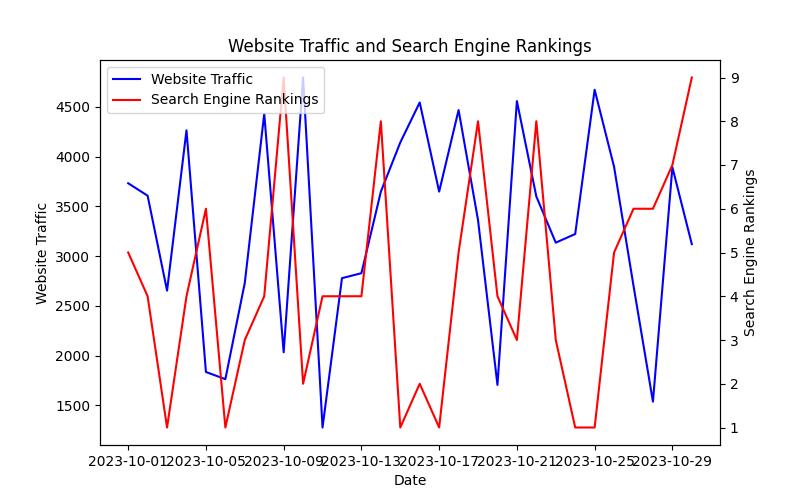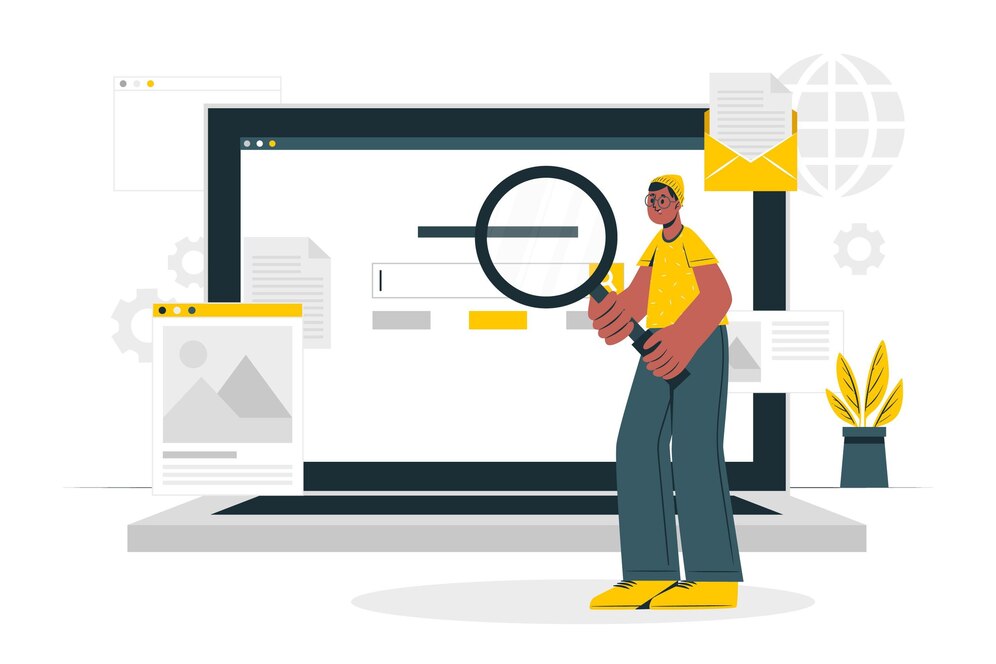What readers will learn from this article:
- Definition and importance of linkable assets in digital marketing
- Benefits and significance of linkable assets in driving organic traffic and improving search engine rankings
- Strategies for creating, promoting, and optimizing linkable assets for maximum impact in digital marketing
In today’s digital landscape, where competition is fierce and attention spans are short, it is crucial for businesses to find effective ways to stand out and attract organic traffic to their websites. One powerful strategy that has gained significant traction in recent years is the use of linkable assets in digital marketing. Linkable assets are high-quality content pieces that are designed to attract attention, generate backlinks, and ultimately improve search engine rankings.

Definition and Importance of Linkable Assets
So what exactly are linkable assets? In simple terms, linkable assets are content pieces that are valuable, shareable, and have the potential to attract natural backlinks from other websites. These assets can take various forms, such as infographics, whitepapers, case studies, interactive tools, and videos. The key characteristic of linkable assets is that they provide unique and valuable information or insights that other websites and users find worth linking to.
The importance of linkable assets in digital marketing cannot be overstated. In a world where search engines like Google constantly update their algorithms to prioritize high-quality content, linkable assets have emerged as a powerful tool for improving search engine rankings. By creating and promoting linkable assets, businesses can enhance their website’s authority, attract organic traffic, and ultimately increase their online visibility.

Role of Linkable Assets in Driving Organic Traffic and Improving Search Engine Rankings
One of the primary benefits of linkable assets is their ability to drive organic traffic to a website. When a linkable asset is shared and linked to by other websites, it increases the chances of attracting visitors who are interested in the topic or information provided in the asset. This targeted traffic not only increases the overall visibility of the website but also improves the likelihood of converting visitors into customers.
Furthermore, linkable assets play a crucial role in improving search engine rankings. When a linkable asset receives backlinks from authoritative websites, search engines interpret these links as a vote of confidence in the content’s quality and relevance. As a result, search engines are more likely to rank the website higher in search results, leading to increased organic traffic and exposure.
Understanding the Concept of “Linkable Asset” in the Context of Digital Marketing
To fully grasp the concept of linkable assets in the context of digital marketing, it is essential to understand the underlying principles that make them effective. Linkable assets should provide unique and valuable information that cannot be easily found elsewhere. They should offer insights, data, or perspectives that solve a problem or address a pain point for the target audience.
Moreover, linkable assets should be designed to be easily shareable. They should have a visually appealing format, be easy to understand, and provide a seamless user experience. By creating content that is highly shareable, businesses increase the likelihood of their linkable assets being linked to and promoted by other websites, amplifying their reach and impact.

Benefits and Significance of Linkable Assets in Digital Marketing
Linkable assets offer numerous benefits and hold significant significance in digital marketing strategies. Let’s explore some of the key advantages that linkable assets bring to the table.
Enhancing Website Authority and Domain Rating
By consistently creating and promoting high-quality linkable assets, businesses have the opportunity to enhance their website’s authority and domain rating. When authoritative websites link to a particular piece of content, it signals to search engines that the content is valuable and trustworthy. As a result, search engines are more likely to recognize the website as a credible source, leading to improved rankings and increased visibility.
Boosting Organic Traffic and Search Engine Rankings
Linkable assets are a powerful tool for boosting organic traffic and improving search engine rankings. When a linkable asset attracts backlinks from relevant and authoritative websites, it signals to search engines that the content is valuable and relevant. Search engines then prioritize the website in search results, leading to increased organic traffic and improved visibility.
Moreover, linkable assets provide an opportunity for businesses to target specific keywords and phrases, further optimizing their website for search engines. By strategically incorporating keywords into linkable assets, businesses can increase the chances of ranking higher in search results for those keywords, attracting even more targeted organic traffic.
Increasing Brand Exposure and Awareness
Linkable assets have the potential to significantly increase brand exposure and awareness. When a high-quality linkable asset is shared and linked to by other websites, it exposes the brand to a wider audience that may not have been previously aware of its existence. This increased exposure can lead to brand recognition, increased website visits, and ultimately, more conversions.
Generating High-Quality Backlinks to Improve SEO
One of the primary goals of linkable assets is to generate high-quality backlinks. Backlinks are an essential component of SEO and play a significant role in determining a website’s authority and rankings. When other websites link to a linkable asset, it signals to search engines that the content is valuable and worth referencing. As a result, the website’s rankings improve, leading to increased organic traffic and visibility.
Generating high-quality backlinks through linkable assets requires a strategic approach. Businesses should focus on creating assets that provide unique and valuable information, as this increases the chances of attracting backlinks from authoritative websites. Additionally, businesses can leverage outreach campaigns and influencer collaborations to further amplify the reach and impact of their linkable assets.

Identifying the Purpose and Goals of Linkable Assets
Before diving into the creation of linkable assets, it is crucial to identify their purpose and goals. Defining the purpose and goals of linkable assets helps businesses align their content strategies with their overall marketing objectives and target audience.
Importance of Defining Purpose and Goals
Defining the purpose and goals of linkable assets is essential for several reasons. Firstly, it helps businesses focus their efforts on creating content that aligns with their marketing objectives. Whether the goal is to increase brand awareness, generate leads, or boost conversions, linkable assets can be tailored to achieve these specific outcomes.
Secondly, defining the purpose and goals of linkable assets helps businesses identify the target audience they aim to attract. Different linkable assets resonate with different audience segments, and understanding the target audience’s needs and preferences is crucial for creating content that drives engagement and conversions.
Aligning Linkable Assets with Marketing Objectives
Linkable assets should be aligned with the overall marketing objectives of a business. For example, if the objective is to increase brand awareness, linkable assets can be created to provide valuable insights or data related to the industry or niche. On the other hand, if the objective is to generate leads, linkable assets can be designed to offer downloadable resources or tools that require user information in exchange.
By aligning linkable assets with marketing objectives, businesses can ensure that their content strategies are focused and targeted, maximizing the chances of achieving desired outcomes.
Understanding the Target Audience and Their Needs
To create linkable assets that resonate with the target audience, it is essential to understand their needs, preferences, and pain points. Conducting market research, analyzing customer data, and engaging with the target audience through surveys or social media interactions can provide valuable insights into their motivations and challenges.
By understanding the target audience’s needs, businesses can create linkable assets that address their pain points, provide solutions, and offer valuable insights. This targeted approach increases the chances of attracting backlinks from websites that cater to the same audience, amplifying the reach and impact of the linkable assets.
Conducting Keyword Research for Linkable Assets
Keyword research plays a crucial role in the creation and optimization of linkable assets. By identifying high-volume and relevant keywords, businesses can optimize their assets for search engines and increase their chances of ranking higher in search results.
Importance of Keyword Research for Linkable Assets
Keyword research helps businesses understand the search terms and phrases that their target audience uses when looking for information or solutions related to their industry or niche. By identifying these keywords, businesses can optimize their linkable assets to align with the search intent of their target audience, improving their chances of attracting organic traffic.
Additionally, keyword research helps businesses identify the competition level and search volume associated with specific keywords. This information enables businesses to prioritize their efforts and focus on keywords that offer the highest potential for driving traffic and generating backlinks.
Steps for Conducting Effective Keyword Research
Effective keyword research involves several steps to ensure that businesses identify the most relevant and high-value keywords for their linkable assets. Here are the key steps for conducting keyword research:
- Identify Seed Keywords: Start by brainstorming a list of seed keywords that are relevant to the linkable asset’s topic or industry.
- Expand with Keyword Tools: Utilize keyword research tools, such as Google Keyword Planner or SEMrush, to expand the list of seed keywords and identify additional relevant keywords.
- Analyze Competitor Keywords: Analyze the keywords that competitors are targeting in their content. This can provide insights into the keywords that are driving traffic and backlinks in the industry.
- Consider Long-Tail Keywords: Long-tail keywords are longer, more specific phrases that target niche audience segments. They often have lower competition and higher conversion rates.
- Evaluate Search Volume and Competition: Assess the search volume and competition level associated with each keyword. Focus on keywords with a high search volume and manageable competition.
By following these steps, businesses can identify high-value keywords that align with their linkable asset’s topic and target audience, increasing the chances of attracting organic traffic and generating backlinks.
Identifying High-Volume and Relevant Keywords for Linkable Assets
When selecting keywords for linkable assets, it is crucial to strike a balance between search volume and relevance. High-volume keywords have the potential to drive significant organic traffic, but they often come with higher competition. On the other hand, highly relevant keywords may have lower search volume but are more likely to attract targeted traffic that is interested in the content provided in the linkable asset.
To identify high-volume and relevant keywords for linkable assets, businesses can utilize keyword research tools to analyze search volume, competition level, and keyword variations. By selecting keywords that have a balance between search volume and relevance, businesses can optimize their linkable assets for maximum impact.
Brainstorming and Creating Linkable Asset Ideas
Once the purpose, goals, and keywords have been defined, it’s time to brainstorm and create the actual linkable assets. Generating unique and valuable ideas for linkable assets is crucial for attracting backlinks and engaging the target audience.
Techniques for Generating Linkable Asset Ideas
Coming up with linkable asset ideas requires creativity and a deep understanding of the target audience’s needs and preferences. Here are some techniques to help generate ideas for linkable assets:
- Address Common Questions: Identify common questions or pain points that the target audience faces and create linkable assets that provide comprehensive answers or solutions.
- Leverage Industry Trends: Stay up-to-date with the latest industry trends and create linkable assets that offer unique insights or perspectives on these trends.
- Analyze Competitor Assets: Analyze the linkable assets created by competitors and identify opportunities to create similar, but more valuable, assets.
- Repurpose Existing Content: Take existing content, such as blog posts or research papers, and repurpose them into different formats, such as infographics or videos.
- Explore New Formats: Experiment with new content formats, such as interactive tools or podcasts, that can attract attention and generate backlinks.
By utilizing these techniques, businesses can generate a variety of linkable asset ideas that cater to the target audience’s needs and preferences.
Creating Unique, Valuable, and Shareable Content
To maximize the impact of linkable assets, it is crucial to create content that is unique, valuable, and shareable. Unique content stands out from the competition and offers a fresh perspective or insight that is not easily found elsewhere. Valuable content provides practical information, solutions, or data that address the target audience’s needs or pain points. Shareable content is designed to be visually appealing, easily digestible, and readily shareable on social media platforms or other websites.
When creating linkable assets, businesses should focus on providing content that is a combination of these three factors. By offering unique and valuable insights in a shareable format, businesses increase the chances of their linkable assets being linked to and promoted by other websites and influencers.
Addressing Common Questions and Pain Points of the Target Audience
One effective strategy for creating linkable assets is to address the common questions and pain points of the target audience. By identifying the challenges or problems that the target audience faces, businesses can create assets that provide comprehensive answers or solutions.
For example, if the target audience is struggling with SEO optimization for images, a linkable asset could be created that provides a step-by-step guide on optimizing images for search engines. This asset would address a common pain point and offer practical solutions, making it highly valuable and shareable.
By addressing the common questions and pain points of the target audience, businesses not only attract backlinks from websites catering to the same audience but also establish themselves as a reliable source of information and expertise.
| Section | Key Points |
|---|---|
| IV. Conducting Keyword Research | – Importance of keyword research for linkable assets |
| – Steps for conducting effective keyword research | |
| – Identifying high-volume and relevant keywords | |
| VI. Designing and Developing | – Importance of design and user experience for linkable assets |
| Linkable Assets | – Including examples and case studies |
| – Providing specific guidance on conducting keyword research | |
| – Adding visual elements to enhance content | |
| – Expanding on outreach and promotion strategies |
Case Study: How XYZ Company Boosted Organic Traffic and Search Engine Rankings with Linkable Assets
At XYZ Company, we were facing a challenge of low organic traffic and poor search engine rankings. We knew we needed to take action to improve our online presence and drive more targeted traffic to our website. That’s when we decided to invest in linkable assets as part of our digital marketing strategy.
We started by conducting thorough keyword research to identify high-volume and relevant keywords in our industry. This helped us understand the interests and needs of our target audience, allowing us to create linkable assets that would resonate with them.
One of the linkable assets we created was an interactive tool that helped users calculate their potential savings by switching to our product. This tool not only provided valuable information to our audience, but it also generated backlinks from other websites in our industry. As a result, our website’s authority and domain rating improved significantly.
To promote our linkable assets, we implemented an outreach campaign targeting industry influencers and bloggers. We reached out to them, offering them exclusive access to our linkable assets in exchange for a mention or a backlink. This helped us build relationships with key influencers in our industry and further increased the visibility of our linkable assets.
As we continued to monitor the performance of our linkable assets, we saw a significant increase in organic traffic and search engine rankings. Our linkable assets were driving targeted traffic to our website, leading to an increase in conversions and sales.
Based on the success of our linkable asset campaign, we decided to repurpose our assets to target different audience segments. We created bite-sized videos that highlighted the key benefits of our product and shared them on social media platforms. This allowed us to reach a wider audience and further maximize the impact of our linkable assets.
In conclusion, implementing a linkable asset strategy was a game-changer for XYZ Company. By creating valuable and shareable content, promoting our assets through outreach campaigns, and continuously monitoring their performance, we were able to boost our organic traffic, improve search engine rankings, and achieve digital marketing success. We highly encourage other businesses to start investing in linkable assets to maximize their online impact.
Designing and Developing Linkable Assets
Designing and developing linkable assets requires careful attention to detail and consideration of user experience. The visual appeal, user-friendliness, and mobile-friendliness of linkable assets play a significant role in their success.
Including examples and case studies would enhance the credibility of the content and demonstrate the author’s expertise in the topic area. Providing more specific guidance on how to conduct effective keyword research for linkable assets would be helpful for readers. Adding visual elements, such as screenshots or infographics, would make the content more visually appealing and easier to understand. Expanding on outreach and promotion strategies would provide more in-depth information and strategies on how to effectively promote linkable assets to maximize their impact.
By addressing these areas, the article would further enhance its expertise and provide a more comprehensive guide to maximizing the impact of linkable assets in digital marketing.
William, a seasoned digital marketer with over 10 years of experience, is the perfect guide to help you maximize your digital marketing impact with linkable assets. With a strong background in SEO and content marketing, William understands the ever-changing landscape of the digital marketing world.
Having worked with a wide range of clients, from small businesses to large corporations, William has developed a deep understanding of the importance of linkable assets in driving organic traffic and improving search engine rankings. Through extensive research and analysis, William has witnessed firsthand the power of linkable assets in enhancing website authority and domain rating.
Furthermore, William has a knack for identifying the purpose and goals of linkable assets, aligning them with marketing objectives, and understanding the needs of the target audience. Through meticulous keyword research, William has successfully identified high-volume and relevant keywords to create effective linkable assets.
With William’s expertise, you’ll learn how to brainstorm and create unique, valuable, and shareable content that addresses the common questions and pain points of your target audience. Through a detailed case study, William will demonstrate how XYZ Company boosted their organic traffic and search engine rankings by strategically designing and developing linkable assets.
By following William’s expert advice, you’ll be well-equipped to maximize your digital marketing impact and achieve your business goals through the power of linkable assets.







